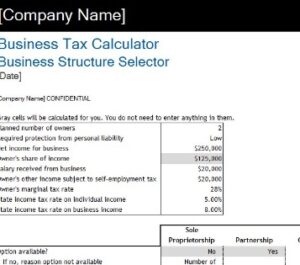How do I transfer the funds from my undeposited account into my bank?
How do I transfer the funds from my undeposited account into my bank?

Quickbooks Online allows users to directly link undeposited funds to bank deposits, streamlining the process and providing a more accurate reflection of cash flow. On the other hand, Quickbooks Desktop requires manual management of undeposited funds, which may pose challenges in reconciling accounts and obtaining real-time financial insights. This level of attention to detail ensures that all deposits are accurately reflected in the undeposited funds account. It is vital to record each deposit promptly and precisely to avoid discrepancies.
QuickBooks for Small Business: Which Version Do You Need?
This crucial process requires an in-depth review of financial records, such as bank statements, receipts, and transaction logs, to pinpoint discrepancies or omissions. the proper timing of workers’ compensation deductions With precision and attention to detail, each transaction must be matched with corresponding records to confirm their status. Accuracy is paramount as discrepancies can impact financial reporting and decision-making.

TikTok Shop Payment Methods: Everything You Need to Know
- For future reference, you can check out this article to learn more about recording and making bank deposits in QuickBooks Online.
- This feature allows businesses to accurately track the flow of funds, ensuring that all incoming payments are accounted for and allocated appropriately.
- By incorporating this approach, businesses can demonstrate their commitment to financial transparency and accountability, thereby instilling trust and confidence in their financial operations.
- This proactive approach also enhances the overall accuracy and reliability of financial reports, providing a solid foundation for informed decision-making and financial planning.
By ensuring timely recording of deposits and appropriately categorizing transactions, businesses can maintain a clear and up-to-date financial picture. Neglecting undeposited funds may lead to discrepancies in financial reporting, making it challenging to reconcile accounts and accurately assess the true financial position. Once set up, any payments received can be deposited into this account, keeping the actual bank deposit separate until the funds are combined in reality.
Best Accounting Software for Small Businesses of 2024
Thorough verification not only resolves discrepancies but also contributes to the overall integrity and reliability of financial data, a fundamental aspect of effective reconciliation. Small businesses can greatly benefit from the visibility and control over their cash inflows that regular reconciliation offers, contributing to their long-term financial stability. Using this Undeposited funds feature is going to be an important part of your workflow if you use an external processing service or have some wait time depositing your money. Now, when you check the Bank Register for your checking account, you can see the deposit posted for the correct amount. Make sure you select Undeposited accelerated depreciation Funds from the “Deposit To” drop-down menu, then save the transaction.
By doing so, the accuracy of bank deposits can be investment income taxes upheld, avoiding any potential discrepancies between the recorded transactions and the actual deposit amounts. This step cements the accuracy and completeness of the reconciliation process. By utilizing accounting software features such as automated matching of transactions and bank feeds, discrepancies and errors can be promptly identified and resolved.
This process starts by accessing the undeposited funds account in QuickBooks Online to gather all transactions that should have been deposited into the bank. While recording sales receipts for payments outside of QuickBooks, sales receipt payments are put into the Undeposited Funds account by default. In your case, it appears that you matched the payments with the bank deposit downloaded via Banking Feeds, which explains why the deposits on your bank statement were cleared. Now, to clear the balance in your Undeposited Funds account, we have two options to avoid duplicate deposits. The Undeposited Funds account is used in QuickBooks to record and hold all payments until they are physically deposited at your real-life bank. However, if you connect your bank and credit card accounts to QuickBooks, it automatically downloads all your transactions.
What Are the Common Mistakes When Reconciling Undeposited Funds in QuickBooks Online?
Duplicating deposits can create challenges during the reconciling process, as it becomes difficult to match the recorded transactions with the actual bank deposits. This may ultimately affect the accuracy of the company’s financial position and the ability to make informed business decisions based on reliable financial data. This process involves a thorough review of all transactions to pinpoint any discrepancies or errors, followed by making the necessary journal entries to rectify them. It is crucial to ensure that all incoming and outgoing funds are accurately reflected in the financial records.
Once discrepancies are identified, they must be investigated to determine the cause, which can range from human error to issues with electronic transfers. Utilizing undeposited funds in Quickbooks contributes to enhanced financial management, streamlined cash flow, and efficient handling of financial transactions within the system. Mismanagement of undeposited funds can result in errors in tax filings and financial statements, potentially causing compliance issues.
After that, record a bank deposit so that you can combine the transactions from your Undeposited funds account and match them to your deposit in bank feeds. Once completed, the undeposited funds account balance should be zero. Implementing best practices for managing undeposited funds in Quickbooks involves regular reconciliation, proper categorization, and timely deposits to ensure effective financial controls, oversight, and tracking. This process begins with a thorough review of all financial records, including invoices, receipts, and bank statements, to pinpoint any inconsistencies.
This function plays a crucial role in accounting and financial management, as it allows businesses to accurately track incoming payments until they are deposited. By utilizing the undeposited funds feature, organizations can ensure that their books accurately reflect the money earned, providing a clear picture of their financial health. Regular reconciliation of undeposited funds is essential for ensuring the proper recording of deposits, reducing errors, and maintaining the integrity of financial reporting. This process is crucial for businesses to accurately track their received payments but process them as a lump sum deposit, reflecting real-world banking practices.

